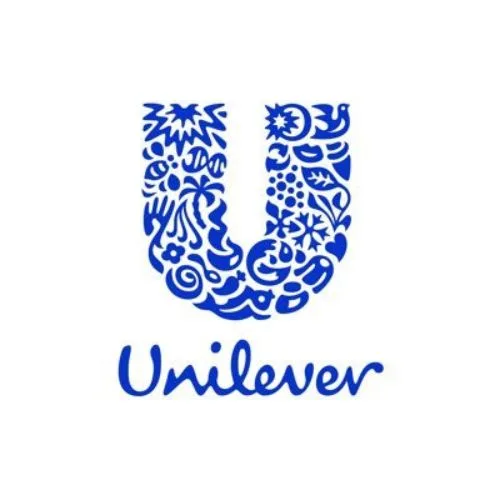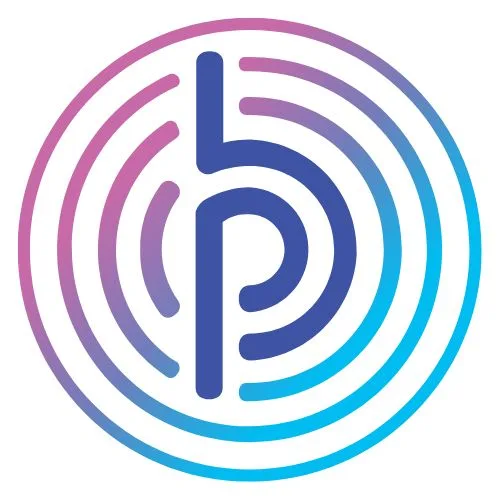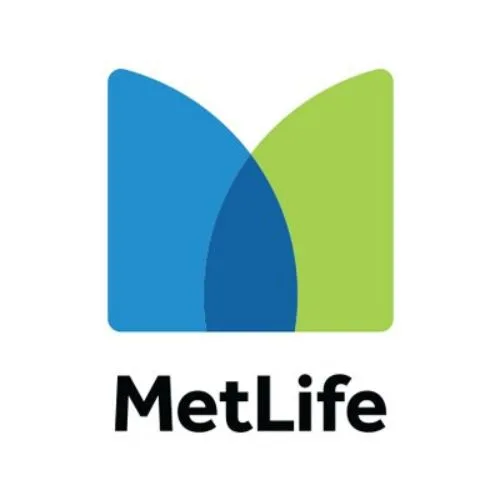- D.i.s.c assessment
Uncover Insight into the How Behind Your Why
TTI Success Insights® DISC assessment gives the most complete picture of an individual’s behavior. Our DISC differentiates your natural style from your adapted, and also incorporates the neurological pathway differences between what you say you are and what you say you are not.
- Highly Validated & Reliable
- Instant Report in Your Mailbox
- All Online
~
report
versions
+
profiles
administered
worldwide
+
languages
+
countries
globally
Companies using the highly acclaimed TTI Success Insights DISC Reports
Why use Success Insights DISC?
Applications of DISC
Our range of DISC Assessment versions help you use the DISC Model for myriad applications.

Hire Right
DISC Interviewing Insights report helps you look at the right behavioral competencies before hiring someone.
Manage Right
Leaders and Managers can now gain in-depth insights on team strengths, limitations, motivators and areas of improvement.
Develop Right
Our DISC Management version will help you coach and develop the right leaders and managers across your developmental journey.
Communicate Right
Learn how our proprietary DISC Wheel can help teams learn how to communicate with impact, manage conflict and drive greater productivity.
Learn how we can help you solve your people problems using DISC
DOWNLOAD SAMPLE REPORTS
One Assessment, Many Solutions
TTI Success Insights® DISC assessment gives the most complete picture of an individual’s behavior. Our DISC differentiates your natural style from your adapted, and also incorporates the neurological pathway differences between what you say you are and what you say you are not.
INTRODUCTION
About DISC
Talent is a combination of many factors, one of which is behavior. The TTI Success Insights® DISC report guides the employee and manager in leveraging behavior for success. DISC is the universal language of observable human behavior, or “how we act”. It’s a non-threatening and non-judgmental tool that simply measures an individual’s behaviors, or how they communicate.
Measured in four proportions (Dominance, Influence, Steadiness and Compliance), the DISC assessment reveals how an individual will perform, including how they prefer to communicate, what he or she will bring to a team, his or her ideal environment and possible limitations he or she may face.
Our behavioral research suggests that the most effective people are those who understand themselves, both their strengths and weaknesses, so they can develop strategies to meet the demands of their environment. TTI Success Insights has been in the Top 20 Companies for Assessment & Evaluation by Training Industry for more than a decade.
DNA OF DISC
How is DISC Measured
TTI’s DISC assessment reliably measures four dimensions of behavior, which are each associated with a behavioral style:
- How you respond to problems or challenges – Dominance
- How you influence others to your point of view – Influence
- How you respond to the pace of the environment – Steadiness
- How you respond to rules and procedures – Compliance
The results of TTI Success Insights® DISC assessment reveal an individual’s high and low placement in each of the four dimensions that make up their unique natural and adapted behavioral styles. This is depicted by two illustrations, TTI’s Style Insights® Graphs and the Success Insights® Wheel.
WHO CREATED THE DISC PROFILE?
History of DISC
William Moulton Marston’s described the DISC characteristics in his 1928 book Emotions of Normal People, which he generated from emotions and behavior of people in the general population. According to Marston, people illustrate their emotions using four behavior types: Dominance, Inducement, Submission, and Compliance.
Bill Bonnstetter later compueterized the DISC report for the first time in 1984 and over the years under the leadership of Target Training International, the DISC Assessment has been developed to be one of the most highly validated versions of DISC, globally. Bill J. Bonnstetter was chairman of TTI Success Insights and founder and chairman of Target Training International.
Frequently asked questions
Everything you need to know about Customer Service Excellence
DISC assesses four primary behavioral styles: Dominance (D), Influence (I), Steadiness (S), and Compliance(C). Each style has unique characteristics and preferences as well as unique strengths and limitations.
DISC is popular because it’s a practical, easy-to-understand assessment that helps individuals better understand their own behavioral competencies and those of others. It enhances communication, team dynamics, and personal growth.
Contrary to popular belief, DISC is not a personality tool. Two main tools to measure personality are objective tests and projective measures. Examples of such tests are the: Big Five Inventory (BFI), Minnesota Multiphasic Personality Inventory (MMPI-2), Rorschach Inkblot test, Neurotic Personality Questionnaire KON-2006 or Eysenck’s Personality Questionnaire (EPQ-R).
DISC is a universal language of communication that measures ‘how’ people choose to do what they do. There are no right or wrong answers while assessing DISC. It’s better referred to as an assessment or profile.
Your core or natural DISC styles remain stable over time, unless you undergo major traumatic or value changing experiences. Your adapted styles on the other hand change quite frequently depending on changes in factors that impact your environment/you.
Taking the DISC assessment can provide insights into your behavioral preferences, improve your communication skills, enhance your understanding of others, and aid in personal and professional development.
A DISC report provides detailed information about your primary and adapted DISC style, how you prefer to communicate, your strengths, potential challenges, and strategies for effective interaction with other styles.
The DISC assessment is suitable for individuals of various ages and backgrounds. It’s widely used in corporate settings but can also be beneficial for personal development. It can be used for professionals as well as students. It can be used for personal or professional purposes. A recommended age for taking this assessment is 16 years and above.
Generally, the DISC assessment is provided by certified professionals and may have a cost associated with it. However, some basic versions may be available online for free.
It’s recommended to complete the assessment in one sitting to ensure consistency and accuracy, but it usually takes only 15-20 minutes to complete.
Benefits include improved self-awareness, enhanced communication skills, better team dynamics, conflict resolution, and personal and professional development.
While no behavioral assessment is 100% accurate, DISC is a well-researched tool that provides reliable insights into behavioral preferences and styles. Depending on who you purchase the DISC report from and how valid and reliable their tool is.
There are primary DISC styles, but individuals often exhibit a blend of styles. The number of combinations can be quite extensive, reflecting the complexity of human behavior. Bill Bonnstetter, the founder of Target Training International was the first to computerise DISC in 1984. Our version of DISC Success Insights comes with 384 possible permutations of the natural and 384 possible permutations of the adapted styles giving you millions of possible combinations – each unique to the individual being assessed.
Do use DISC to understand and appreciate differences. Don’t use it to label or pigeonhole people (Stereotyping).
Do apply it for team building and communication. Don’t use it as the sole criterion for employment decisions.
DISC Success Insights is widely used in the workplace for a variety of purposes. Here are possible applications of DISC at the workplace:
-
Team Building: DISC can help in understanding team dynamics and improving teamwork by highlighting each team member’s communication style and preferences.
-
Leadership Development: Leaders can use DISC to adapt their management style to better suit the needs of their team members.
-
Conflict Resolution: Understanding different DISC styles can assist in resolving conflicts by recognizing the root causes based on differing communication styles or priorities.
-
Improving Communication: DISC can be used to tailor communication strategies to suit different team members, leading to more effective and efficient interactions.
-
Employee Engagement: By understanding the motivational needs of different DISC profiles, managers can boost employee engagement and job satisfaction.
-
Recruitment and Selection: DISC profiles can aid in determining whether a candidate’s behavioral style aligns with the role and team they are being considered for.
-
Career Development: Individuals can use their DISC profiles to identify strengths and areas for improvement, guiding their professional development.
-
Sales Training: Sales professionals can use DISC to understand and adapt to the buying styles of different clients, improving sales effectiveness.
-
Change Management: DISC assessments can help managers understand how different team members might perceive and react to change, and plan accordingly.
-
Customer Service Improvement: Understanding DISC profiles helps customer service teams adapt their approach to suit different types of customers.
-
Performance Management: DISC can be used to provide personalized feedback and development plans based on an employee’s behavioral style.
-
Workplace Culture Analysis: DISC assessments can provide insights into the overall behavioral style of an organization, helping to shape or understand its culture.
-
Stress Management: Recognizing how different DISC types react to stress can help in developing more effective stress management strategies.
-
Enhancing Creativity and Innovation: Understanding the diverse perspectives and approaches of different DISC styles can foster a more creative and innovative environment.
-
Personalized Coaching: Coaches and mentors can use DISC to tailor their approach to the individual needs and styles of their mentees.
DISC assessment can be an extremely valuable tool for personal development. By understanding your own DISC profile, you can gain insights into your personal behavioral style, including your strengths, challenges, and how you typically respond to certain situations. Here are some ways in which the DISC assessment can be used for personal development:
-
Self-Awareness: DISC helps in understanding your own behavior, communication style, and motivations, which is the first step in personal growth.
-
Communication Skills: Knowing your DISC style can help you identify the most effective ways for you to communicate with others, and understand how to adapt your style when necessary.
-
Stress Management: DISC can provide insights into how you respond to stress and pressure, allowing you to develop strategies to manage stress more effectively.
-
Conflict Resolution: Understanding your behavioral tendencies can help you recognize potential sources of conflict in your interactions with others and find more constructive ways to resolve them.
-
Relationship Building: By understanding your DISC profile, you can better appreciate how your behavior affects others, leading to improved relationships both personally and professionally.
-
Career Development: DISC can guide you in identifying career paths and roles that align with your natural strengths and preferred working style.
-
Leadership Skills: If you are in a leadership role or aspire to be, DISC can help you understand how to lead people with different styles effectively.
-
Teamwork: Even in non-leadership roles, understanding your DISC profile can improve your ability to work in a team by recognizing how your style complements or contrasts with others.
-
Personal Goal Setting: Insights from your DISC assessment can inform your personal goals, helping you focus on areas that align with your strengths or need development.
-
Emotional Intelligence: DISC can help in developing emotional intelligence by fostering an understanding of your emotional responses and how they impact your behavior and interactions with others.
-
Motivation: Understanding what motivates you according to your DISC profile can help in finding ways to stay motivated and engaged in both personal and professional pursuits.
-
Problem-Solving: DISC can offer insights into how you approach problems and challenges, allowing you to develop more effective problem-solving strategies.
-
Adaptability: Knowing your DISC style can help you recognize situations where you might need to adapt your natural style to be more effective.
-
Time Management: DISC profiles can provide clues about your time management preferences and challenges, helping you develop better strategies to manage your time.
-
Personal Fulfillment: By understanding and aligning your actions with your natural behavioral style, you can achieve a greater sense of personal fulfillment and well-being.
Determining the most common or rarest DISC style is challenging because the prevalence of each DISC profile can vary significantly based on the population being studied, the context, culture and the methodology of the research.
Absolutely, it’s quite common for individuals to exhibit different DISC styles in different environments, such as at work versus at home. This phenomenon is largely due to the adaptability of human behavior in response to varying contexts and expectations.
-
Context-Dependent Behavior: People often adjust their behavior based on the environment and the people around them. For instance, a person might display a more dominant and assertive behavior (high D) at work due to the nature of their job or workplace culture, but might be more steady and cooperative (high S) in their home life, where a different approach is needed.
-
Role Expectations: The roles we play in different areas of our lives can influence our behavior. A person might be a manager at work, which requires a certain level of assertiveness and decision-making (traits associated with high D or C), but the same person might be more relaxed and easy-going (traits associated with high I or S) in a family setting.
-
Stress and Comfort Levels: In more comfortable and familiar settings, such as at home, individuals might naturally revert to their inherent DISC style. In contrast, workplace stress or the need to meet professional expectations can lead someone to adopt a different style.
-
Adaptation for Success: In professional settings, individuals often consciously or subconsciously adapt their DISC style to what they perceive as necessary for success. This adaptation can be influenced by the company culture, the specific demands of their job, or their perceptions of what constitutes effective professional behavior.
-
Awareness and Management: People who are aware of their DISC profiles might intentionally manage or adapt their behavior in different settings to achieve better outcomes. For instance, someone might consciously use a more Influential (high I) style in a social setting to connect with friends, even if their natural style is more Conscientious (high C).
Your DISC profile can provide valuable insights into the types of work environments and roles that might suit you best, but it’s important to remember that it doesn’t predict or determine your job capabilities or success. DISC profiles are more about understanding your preferred style of behavior and communication, rather than dictating your skills or abilities.
-
Alignment with Job Roles: Certain DISC profiles may naturally align with the typical demands of specific job roles. For example, a high D (Dominance) profile might thrive in roles requiring decisive action and leadership, like management or entrepreneurship, while a high I (Influence) profile might excel in roles that involve communication and persuasion, such as sales or public relations.
-
Work Environment Preferences: Your DISC profile can indicate the type of work environment in which you might be most comfortable or productive. Someone with a high S (Steadiness) profile might prefer a stable, predictable environment, while a high C (Conscientiousness) profile might seek out roles that require attention to detail and precision, such as in finance or engineering.
-
Interpersonal Interactions: Understanding your DISC style can help you identify the types of teams and organizational cultures where you will work most effectively. For instance, individuals with a high I profile usually enjoy collaborative and social environments, whereas those with a high C profile might prefer working independently.
-
Career Development: DISC can be a tool for personal development, helping you identify areas for growth that could expand your career options. For example, if your profile suggests challenges with assertiveness or decision-making (traits associated with D), you might focus on developing these areas to pursue leadership roles.
-
Job Satisfaction: Knowing your DISC profile can help you understand what might make you more or less satisfied in a job. If your job is congruent with your behavioral style, you’re likely to be more satisfied and engaged.
-
Adaptability: While DISC can suggest environments and roles where you might naturally excel, it’s also a reminder of the value of adaptability. Understanding your DISC profile can help you recognize areas where you might need to adapt your style to different job requirements or work environments.
-
Career Exploration: For those unsure about their career path, DISC can provide a starting point for exploring suitable roles that align with their natural behavioral tendencies.
The idea that a specific DISC profile inherently makes the “best” leader is a bit of a misconception. Leadership effectiveness is influenced by a multitude of factors, including but not limited to one’s behavioral style. Each DISC style has its unique strengths and potential challenges when it comes to leadership. It’s not what style you have that determines success, it’s what you do with the style you have that is the real determinant of how successful you may be at work or in life.
Having a mix of all DISC styles in a team can be highly beneficial for several reasons. Diversity in behavioral styles contributes to a more balanced, dynamic, and effective team.
-
Complementary Strengths: Each DISC style brings its own strengths to a team. For instance, D styles often excel in decision-making and leading efforts, I styles are great at motivating and persuading, S styles provide consistency and team support, and C styles are adept at analysis and attention to detail. A team that includes all these styles can leverage a wider range of strengths.
-
Balanced Perspectives: Different DISC styles contribute different perspectives to problem-solving and decision-making. This diversity can lead to more innovative solutions and help avoid groupthink, where teams become blind to alternatives outside their collective comfort zone.
-
Enhanced Communication: A mix of styles can improve communication within the team. Different members may naturally communicate in different ways, and having a variety of styles can help ensure that communication is effective for everyone.
-
Adaptability: Teams with a variety of DISC styles may be more adaptable to changing circumstances. For example, D and I styles may excel in fast-paced, changing environments, while S and C styles may provide stability and consistency in more structured settings.
-
Role Suitability: Different DISC styles may naturally align with different roles within a team. For example, a D style might naturally take on leadership roles, while an I style might be more suited to roles that require networking and outreach.
-
Conflict Management: Understanding different DISC styles can help in managing and resolving conflicts within a team. It allows team members to appreciate where others are coming from and why they may behave in certain ways.
-
Learning and Development: Working with a diverse range of styles can be a learning opportunity for team members. It encourages individuals to develop a more flexible approach and learn to interact effectively with a variety of people.
However, it’s also important to note that simply having a mix of DISC styles doesn’t automatically lead to a successful team. The key is how these styles are understood and managed. Teams need to be aware of their different styles and actively work on leveraging their strengths while compensating for their weaknesses. Effective leadership and team development practices are crucial in helping diverse teams work together effectively.
In the context of DISC assessments, particularly those offered by certain providers like TTI Success Insights, the “Energy Line” is a concept used to help interpret the results. Here’s an explanation of what it represents and how it’s used:
-
Definition: The Energy Line in a DISC report typically represents a benchmark or average line that divides high energy traits from low energy traits. It is often set at a specific point on the graph of a DISC assessment result, such as at the midpoint of the scale.
-
High Energy Traits: Traits above the Energy Line are considered to be more natural or comfortable for the individual. These are the behaviors that a person will likely exhibit when they are in a relaxed, stress-free environment. They come naturally and require less effort from the individual.
-
Low Energy Traits: Traits below the Energy Line are seen as less natural or comfortable. These behaviors can still be exhibited by the individual, but they typically require more conscious effort and energy. They may not come as naturally and could be more draining for the individual to maintain over long periods.
-
Understanding Adaptability: The Energy Line can also be used to understand how a person adapts their behavior in different situations. For instance, if a person’s natural style (typically shown in a graph as the “Natural Style” or “Basic Graph”) is above the line but their adapted style (shown in a separate graph as the “Adapted Style” or “Pressure Graph”) falls below the line, it indicates that they are adapting or stretching their natural tendencies to meet the demands of their environment, which might be due to workplace requirements, social expectations, etc.
-
Application: In practical terms, understanding where traits fall in relation to the Energy Line can be helpful in personal development, coaching, and team dynamics. For instance, if a trait that is crucial for a particular job role falls below the Energy Line for an individual, it might suggest that the role could be more challenging for them or require more effort to sustain certain behaviors.
-
Tailoring Approach: This concept helps in tailoring development programs and management styles. If a manager knows that a certain behavior falls below an employee’s Energy Line, they can provide more support or structure to help the employee succeed.
It’s important to note that the Energy Line is just one part of a comprehensive DISC assessment and should be interpreted in the context of the full report and an individual’s overall profile. Also, different DISC assessment providers might use slightly different terminology or methods, so the concept of the Energy Line might vary or be named differently across different DISC tools.
Yes, Target Training International, Success Insights offers DISC certification programs for professionals seeking to deepen their understanding and application of DISC assessments.
The CPBA, or Certified Professional Behavioral Analyst, is a certification offered by TTI Success Insights (or other affiliated organizations), which specializes in DISC assessments and other talent management tools. This certification is designed for professionals who want to deepen their understanding of human behavior and apply this knowledge in various settings, such as coaching, leadership development, team building, and human resources. Let’s break down what this certification typically involves:
-
Training: The CPBA certification usually involves a comprehensive training program that covers the theories behind the DISC assessment, how to interpret DISC results, and how to apply this understanding in a practical, real-world context.
-
DISC Model: Participants learn in-depth about the DISC model, which includes the four primary behavioral traits: Dominance, Influence, Steadiness, and Conscientiousness. The training covers how these traits manifest in behavior and communication styles.
-
Assessment Interpretation: A key component of the training is learning how to accurately interpret DISC assessment results. This includes understanding the graphs and reports generated by DISC assessments and being able to explain these results to individuals and teams.
-
Application: The certification teaches how to apply DISC knowledge in various contexts. This might include coaching individuals based on their DISC profile, helping teams understand their dynamics and improve collaboration, or guiding organizations in employee development and placement.
-
Ethics and Best Practices: The program also covers the ethical considerations and best practices in using behavioral assessments, ensuring that certified professionals use DISC responsibly and effectively.
-
Certification Exam: Typically, to earn the CPBA certification, participants must complete the training and pass an examination that tests their knowledge of the DISC model and their ability to apply this knowledge.
-
Professional Development: The CPBA is often pursued by professionals in coaching, consulting, human resources, organizational development, and leadership development. It is seen as a way to enhance their professional toolkit and offer more value to their clients or organizations.
-
Continuous Learning: In some cases, maintaining a CPBA certification may require ongoing learning or recertification processes to ensure that professionals stay updated with the latest developments in the field.
Learn how we can help you solve your people problems using DISC
Our Blog
BEI Certification: 11-12 July 2025
Elevate your hiring with BEI Certification on 11-12 July 2025. Equip yourself with evidence-based BEI skills to make better hiring decisions.
5 Hidden Gaps in Employee Experience
5 Hidden Gaps in Employee Experience leaders must address to improve trust, engagement, and organizational alignment.
Cost of Hiring the Wrong Agent in the UAE Realty Market?
Discover the true Cost of Hiring the Wrong Agent in the UAE Realty Market and avoid setbacks.
How DNA-25 Unlocks Hyper-Personalized Growth Paths
How DNA-25 Unlocks Hyper-Personalized Growth Paths: Helping you create meaningful personal development plans that work.
10 Practical Tips to Turn Company Values into Action
10 Practical Tips to Turn Company Values into Action: The ultimate guide to help you make your company values work for you.
Master Email Communication with DISC & AI
Email remains one of the most relied-upon tools in professional communication, yet its effectiveness often falters when messages are too generic to resonate. With inboxes overflowing and attention spans at an all-time low, capturing your recipient’s attention requires more than a standard template. The key lies in adapting emails to match individual communication styles.
Enhancing Teamwork with DISC: Strategies for Building Trust and Unity
Enhance team work using the DISC model. Learn how to build trust and improve work by aligning communication and roles with DISC profiles.
Interviewing Skills Certification – Dubai, UAE
Learn how to hire the best talent for your organisation. Synergogy's Certified BEI Practitioner offers the gold standard in Interviewing Skills Training, globally.
Mastering DISC Communication Through Presentations
In the intricate art of presentation, understanding your audience’s distinct communication styles is crucial for success. The DISC model, which categorizes communication […]
Mastering Stakeholder Communication Through Email Using DISC
In the fast-paced professional world, effective email communication with stakeholders is pivotal for achieving successful outcomes. By utilizing the DISC model, professionals […]
Mastering Communication with DISC: Enhance Your Negotiation Skills
Effective negotiation is not just about what you say but how you say it, and understanding the dynamics of interpersonal behavior is […]
Boosting Team Efficiency with DISC Profiles
Learn how to boost team efficiency with DISC Profiles. The DISC Team Profile offers you all you need to enhance your team's productivity.
Harnessing DISC Assessments for Enhanced Team Collaboration
Learn how to harness DISC assessments to enhance team collaboration with Synergogy's world class DISC based team building workshops.
What is BEI?
Our comprehensive guide unravels the nuances of BEI, from its foundational concepts to its practical application providing invaluable insights for HR professionals.
The Manager’s Guide to Mastering BEI Techniques
Discover the essentials of Behavioral Event Interviewing (BEI) in this in-depth guide, tailored for managers and HR professionals. Learn about crafting questions, integrating technology, and best practices to enhance talent acquisition and make informed hiring decisions.
Competency-Based Interviewing: An In-Depth Exploration into BEI
Dive into Behavioral Event Interviewing (BEI) and transform your hiring strategy. This guide introduces the essentials of crafting effective BEI questions and evaluating candidate responses, seamlessly integrating these methods into your talent acquisition process.
7 Proven Strategies for Managing Difficult Customers with DISC: Transforming Tensions into Triumph
Gaining insight into both personal and customer behaviours and preferences can be invaluable for customer service professional striving to provide exceptional service to challenging customers.
Building a Successful Succession Plan: A Step-by-Step Guide
Succession planning is a strategic process aimed at identifying and developing potential leaders within an organization who can replace key leaders when they leave, retire, or are unable to perform their duties. It involves nurturing high-potential employees for advancement, ensuring business continuity, and promoting a culture of talent development.
A Comprehensive Guide to Competency Mapping
Competency mapping is a strategic HR process used to identify and analyze the knowledge, skills, and behaviors needed to perform tasks efficiently and effectively within an organization. It aids in understanding the capabilities of current employees, thus facilitating informed decisions on recruitment, training, and performance evaluation.
The Comprehensive Guide to Creating Mission, Vision, and Values Statements
Crafting mission, vision, and values statements is an integral aspect of an organization's strategic planning process. These declarations provide a roadmap guiding the organization's decisions and actions, while also instilling a sense of purpose among its stakeholders
The Ultimate Guide to Organizational Development
Organizational development is a meticulously planned strategy. It cultivates growth and change within organizations, fostering the enhancement of organizational effectiveness and employee […]
Stepping Up: A Comprehensive Guide for First-Time Managers
The transition from a specialist or an individual contributor to the role of a manager is often filled with a mixture of excitement and apprehension. For many, it is the first step into the realm of leadership, offering a broader perspective of the organization and presenting an entirely new set of responsibilities. This voyage from being an individual player to becoming a first-time manager is as thrilling as it is profound.
Navigating Conflict: A Comprehensive Guide to Conflict Management
"Conflict is the gadfly of thought," so proclaimed the esteemed philosopher, Socrates. It stings and nudges us out of our complacency and comfort zones. In today's dynamic organizations, his wisdom resonates more than eve
Implementing a Mentorship Program: Ultimate Guide
A mentorship program can have a profound impact on organizations, promoting professional growth, fostering stronger relationships, and boosting employee satisfaction. This comprehensive guide offers a practical roadmap for organizations to establish and implement a successful mentorship program.
Job Evaluation Using Point Factor
Navigate through the realm of job evaluation by delving into the effective Point Factor Method. Discover how this method revolutionizes workplace productivity and enhances human resource management.
India’s Premier Design Thinking Certification Program – CDTP™
In a world consistently propelled by digital innovation, the realm of Design Thinking is becoming increasingly prominent. The torchbearer in this transformative journey, particularly in India, is the Synergogy Design Thinking Certification program. More than just an educational platform, Synergogy offers an unrivalled roadmap to a prosperous and burgeoning professional future.
Mastering Certified Competency-Based Interviewing Skills
In today's competitive job market, having strong interviewing skills is crucial for both job seekers and employers. To effectively assess candidates and make informed hiring decisions, organizations are increasingly adopting competency-based interviewing techniques. In this comprehensive guide, we will delve into the realm of certified competency-based interviewing skills, providing valuable insights, strategies, and tips to help you master this approach and excel in your hiring process.
Introduction to Interviewing Skills Training Certification
In the ever-evolving landscape of the modern workplace, companies need to adapt swiftly to keep up with the changing times. The traditional method of evaluating candidates based solely on their resumes and qualifications is no longer sufficient. It is the interviewing skills that hold the key to unlocking a candidate's true potential.
Mastering the Art of Interviewing Skills: A Comprehensive Guide
Whether you're looking to be the next Sherlock of recruitment or the Usain Bolt of job candidates, you've come to the right place. Strap yourself in and get ready for a whirlwind ride through the world of interviews, a dimension where everything you say or don't say can change your destiny.
Mastering CEO Succession Planning
In the fast-paced corporate world, CEO succession planning is not just a strategy, it's a necessity. The role of a CEO is pivotal in steering the organization towards success. However, the inevitability of change means that companies must be prepared for the day when their current leader steps down. This is where CEO succession planning comes into play. It ensures that there is a seamless transition of leadership, safeguarding the company’s vision, and maintaining its growth trajectory.
5 Simple Steps to Effective Problem Solving
The ability to solve problems is a crucial skill in the modern workplace. It can make the difference between success and failure, […]
Paving Your Path as a First-Time Manager: A Definitive Guide
Stepping into the world of management for the first time can often feel like venturing into a jungle without a compass. It’s a daunting landscape filled with challenges, expectations, and a new lexicon of ‘manager-speak’. But fear not! Here’s our comprehensive guide, sprinkled with a little wisdom from seasoned managers and some hard-learned lessons, to help you navigate your journey with confidence.
6 Leaders Share Their Insights on Diversity, Equity, and Inclusion
In this article, we interview six leaders from various industries to hear their thoughts on how to create a more inclusive workplace […]
How to develop an agile culture for startups?
The new role of Learning & Development in the post-pandemic era. COVID-19 has forced companies to re-image how L&D should function.
5 Mistakes to avoid while hiring internationally
The new role of Learning & Development in the post-pandemic era. COVID-19 has forced companies to re-image how L&D should function.
Creating a blueprint for organizational mental health
The new role of Learning & Development in the post-pandemic era. COVID-19 has forced companies to re-image how L&D should function.
BEI Certification Program
The Certified BEI Practitioner (C-BeiP)™ accreditation is a 8-hour BEI Certification Program. This interviewing skills certification program is endorsed by Human Resource Certification Institute (HRCI) for 8 Hours of continuing education units.
A Retro Look at Learning & Development: Preparing for the Future
The new role of Learning & Development in the post-pandemic era. COVID-19 has forced companies to re-image how L&D should function.
Self Regulation
Building your emotional intelligence by improving self regulation is one of the most difficult part of improving your Emotional Quotient.























